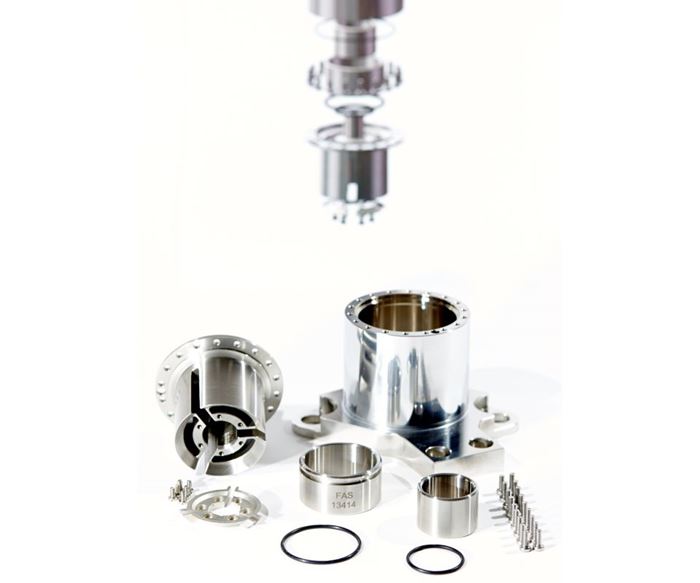Metal Additive Manufacturing Delivers Spare Parts on Demand
A powder-bed metal AM machine enables a manufacturer to deliver spare parts to beverage-filling plant customers as they are needed.
Share








.png;maxWidth=45)
DMG MORI - Cincinnati
Featured Content
View More

Takumi USA
Featured Content
View More
In the food and beverage industry, the plants that fill bottles and cans with beverages must be flexible and fast. Downtime at a beverage filling plant is costly, so it is imperative to replace broken parts as soon as possible. Jung & Co. Gerätebau GmbH, a Germany-based manufacturer specializing in stainless steel components, is using additive manufacturing to ensure that spare parts for beverage filling plants are available quickly and on-demand. The company uses an M2 Cusing Multilaser metal additive manufacturing machine from Concept Laser to deliver on this promise.
The M2 Multilaser system uses two 400-watt lasers to fuse layers of fine metal powder held in a bed inside an enclosed processing chamber. Each layer of metal solidifies as it cools, building up the component. This layer-by-layer process enables the production of part designs that would not be possible with machining, and can help reduce or eliminate assembly for complex components.
An example of a component that has benefited from Jung's additive manufacturing capacity is a filler valve for a can filling plant. When manufactured by conventional means, the valve assembly consists of seven components milled or turned from stainless steel 1.4404 (pictured above). Following machining, seals are applied and the components are fitted manually. Manufacturing the assembly by conventional means takes 8 to 15 weeks, including the procurement of a required precision cast part.
Previously, Jung & Co. would have needed to keep a spare valve assembly in storage so that the plant could be up and running quickly in the event of a failure. However, with the metal additive manufacturing capacity provided by the Concept Laser M2, this component can now be made on demand.
To make the best use of this additive manufacturing technology, Jung & Co. redesigned the can filler valve using topology optimization. The new, one-piece can filler valve (shown in the second image above) can be manufactured in one operation on the M2, meaning there is no longer any need for the seals and interfaces that are necessary in the conventionally produced version. The additively manufactured component is also 35 percent lighter than the conventionally produced version.
According to Jung & Co., the 3D-printed can filler valve is cheaper than a conventional solution, and spare parts no longer need to be purchased in advance and kept in storage, tying up capital. It takes only one week to manufacture the part additively.
Related Content
-
Digital Transparency in Machining Key to Multi-Site Additive Manufacturing
Cumberland Additive’s CNC programmer in Pennsylvania spends most of his time writing programs for machine tools in Texas.
-
Go Digital: How to Succeed in the Fourth Industrial Revolution With Additive Manufacturing
The digitalization of manufacturing is set to transform production and global supply chains as we know them, and additive manufacturing has been leading the way in many industries.
-
Digital Thread Enables First-Time-Right 3D Printing
Connecting all stages of manufacturing, from design to postprocessing, helps break down barriers to industrializing additive manufacturing.

.jpg;width=70;height=70;mode=crop)















.png;maxWidth=150)



















